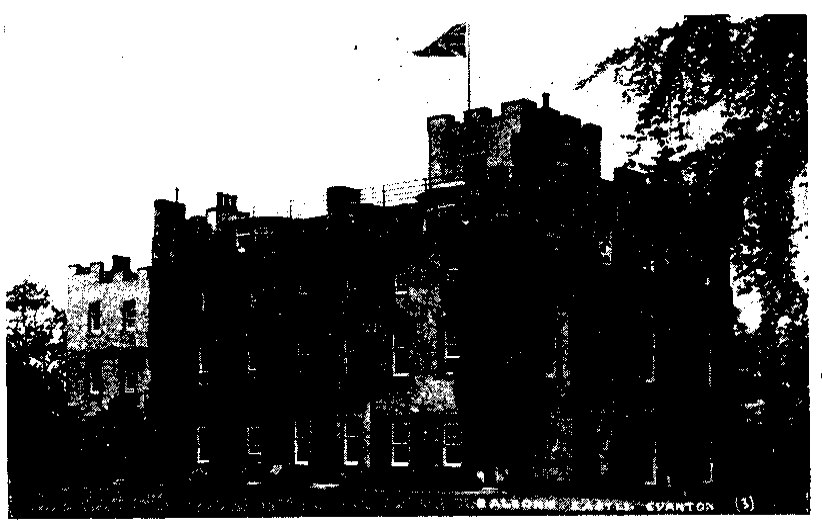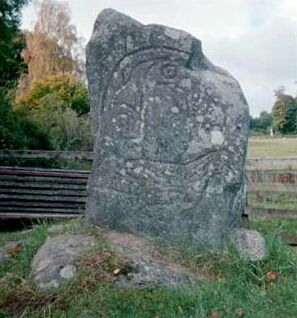|
Balconie Castle
Balconie Castle ( gd, Bailcnidh) lay in the parish of Kiltearn, about east of the village of Evanton in the Highlands of Scotland. History The MacDonalds The castle was an old seat of the Mormaers and Earls of Ross, chiefs of Clan Ross. It was later held by their successors, the Clan Donald Earls of Ross. Alexander MacDonald of Lochalsh, chief of the Clan MacDonald of Lochalsh and a relative of the MacDonald Earl of Ross and Lord of the Isles, held a Christmas feast at Balconie in 1485. He invited all of the dependents of his own clan and many of the most powerful Highland chieftains. Kenneth Mackenzie arrived at the feast with 40 men but without his MacDonald wife which insulted the MacDonalds. To make matters worse as there was not enough room in Balconie, Kenneth was provided lodgings in the kiln and in a fit of anger he hit out at one of the Macleans of Duart who had made the accommodation arrangements. This was seen by the servants as a deliberate insult against the Ma ... [...More Info...] [...Related Items...] OR: [Wikipedia] [Google] [Baidu] |
Balconie Castle
Balconie Castle ( gd, Bailcnidh) lay in the parish of Kiltearn, about east of the village of Evanton in the Highlands of Scotland. History The MacDonalds The castle was an old seat of the Mormaers and Earls of Ross, chiefs of Clan Ross. It was later held by their successors, the Clan Donald Earls of Ross. Alexander MacDonald of Lochalsh, chief of the Clan MacDonald of Lochalsh and a relative of the MacDonald Earl of Ross and Lord of the Isles, held a Christmas feast at Balconie in 1485. He invited all of the dependents of his own clan and many of the most powerful Highland chieftains. Kenneth Mackenzie arrived at the feast with 40 men but without his MacDonald wife which insulted the MacDonalds. To make matters worse as there was not enough room in Balconie, Kenneth was provided lodgings in the kiln and in a fit of anger he hit out at one of the Macleans of Duart who had made the accommodation arrangements. This was seen by the servants as a deliberate insult against the Ma ... [...More Info...] [...Related Items...] OR: [Wikipedia] [Google] [Baidu] |
Clan Munro
Clan Munro (; gd, Clann an Rothaich ) is a Highland Scottish clan. Historically the clan was based in Easter Ross in the Scottish Highlands. Traditional origins of the clan give its founder as Donald Munro who came from the north of Ireland and settled in Scotland in the eleventh century, though its true founder may have lived much later. It is also a strong tradition that the Munro chiefs supported Robert the Bruce during the Wars of Scottish Independence. The first proven clan chief on record however is Robert de Munro who died in 1369; his father is mentioned but not named in a number of charters. The clan chiefs originally held land principally at Findon on the Black Isle but exchanged it in 1350 for Estirfowlys. Robert's son Hugh who died in 1425 was the first of the family to be styled " of Foulis", despite which clan genealogies describe him as 9th baron. During the fifteenth and sixteenth centuries the Munros feuded with their neighbors the Clan Mackenzie, and during th ... [...More Info...] [...Related Items...] OR: [Wikipedia] [Google] [Baidu] |
Castles In Highland (council Area)
A castle is a type of fortified structure built during the Middle Ages predominantly by the nobility or royalty and by military orders. Scholars debate the scope of the word ''castle'', but usually consider it to be the private fortified residence of a lord or noble. This is distinct from a palace, which is not fortified; from a fortress, which was not always a residence for royalty or nobility; from a ''pleasance'' which was a walled-in residence for nobility, but not adequately fortified; and from a fortified settlement, which was a public defence – though there are many similarities among these types of construction. Use of the term has varied over time and has also been applied to structures such as hill forts and 19th-20th century homes built to resemble castles. Over the approximately 900 years when genuine castles were built, they took on a great many forms with many different features, although some, such as curtain walls, arrowslits, and portcullises, were ... [...More Info...] [...Related Items...] OR: [Wikipedia] [Google] [Baidu] |
Invergordon
Invergordon (; gd, Inbhir Ghòrdain or ) is a town and port in Easter Ross, in Ross and Cromarty, Highland (council area), Highland, Scotland. It lies in the parish of Rosskeen. History The town built up around the harbour which was established in 1828. The area became a police burgh in 1863 and Invergordon Town Hall was completed in 1871. The Invergordon Grain Distillery, operated by Philippines-owned whisky giant Whyte & Mackay, was established in 1959. Connected to the distillery was the Invergordon Distillery Pipe Band which was formed in 1964. In 1971, the British Aluminium Company, which was 47% owned by Reynolds Metals, opened an aluminum smelter at Invergordon. Naval Base The naval institute was designed in 1914 by Edinburgh architect Stewart Kaye in anticipation of the First World War. The naval base was the venue for the Invergordon Mutiny of 1931. Remains of the naval base are evidenced in the tank farm lying behind the town centre; the port used to contain fuel o ... [...More Info...] [...Related Items...] OR: [Wikipedia] [Google] [Baidu] |
Alness
Alness (, ; gd, Alanais) is a town and civil parishes in Scotland, civil parish in Ross and Cromarty, Scotland. It lies near the mouth of the River Averon, near the Cromarty Firth, with the town of Invergordon 3 miles (5 km) to the east, and the village of Evanton 4 miles (6 km) to the south-west. The parish has a population of 5,310, although the census locality, which includes part of the parish of Rosskeen, has a population of 5,186. According to the Highland Council, the population of Alness has increased by around 20% since the last census in 2011. The population as of 2016 was 6,101. For most of the 1990s and early 2000s, Alness regularly entered and won flower competitions such as Scotland in Bloom, Britain in Bloom and others, winning many awards. This helped regenerate many areas of the town, with housing estates winning separate awards. They have not entered in recent years due to the financial costs. The town is still adorned by flowers maintained by volunt ... [...More Info...] [...Related Items...] OR: [Wikipedia] [Google] [Baidu] |
Second World War
World War II or the Second World War, often abbreviated as WWII or WW2, was a world war that lasted from 1939 to 1945. It involved the vast majority of the world's countries—including all of the great powers—forming two opposing military alliances: the Allies and the Axis powers. World War II was a total war that directly involved more than 100 million personnel from more than 30 countries. The major participants in the war threw their entire economic, industrial, and scientific capabilities behind the war effort, blurring the distinction between civilian and military resources. Aircraft played a major role in the conflict, enabling the strategic bombing of population centres and deploying the only two nuclear weapons ever used in war. World War II was by far the deadliest conflict in human history; it resulted in 70 to 85 million fatalities, mostly among civilians. Tens of millions died due to genocides (including the Holocaust), starvation, ma ... [...More Info...] [...Related Items...] OR: [Wikipedia] [Google] [Baidu] |
Evan Fraser Of Balconie
Captain Evan Baillie Fraser of Balconie was the son of Alexander Fraser of Inchcoulter/Balconie who founded the modern town of Evanton, naming it after his son. Evan married Christine Nicol in 1838 who bore him children: Alexander Thomas (1839), John Thomas (1842) and Elma (1843). He became a Collector of Stamps with the Excise Service. The Reverend Thomas Munro, minister of Kiltearn, writing in the 1840s lists him among five landowners in the parish of Kiltearn Kiltearn ( Gaelic: ''Cill Tighearna'') is a parish in Ross and Cromarty, Scotland. It is in the Presbytery of Ross. The principal settlement is the village of Evanton, and the parish extends almost to Dingwall and about halfway to Alness. The ... at the time, and tells us that "all of them, except Captain Fraser, renon-resident in the parish". The new village was partly a convenient way of absorbing the numbers of people in the parish who were being evicted to make way for sheep, a process which was part of the h ... [...More Info...] [...Related Items...] OR: [Wikipedia] [Google] [Baidu] |
Foulis Castle
Foulis Castle is situated two miles south-west of Evanton in the parish of Kiltearn, Ross and Cromarty, Scotland. It is a white washed mansion that incorporates an old tower house with gun loops. The castle was held by the Clan Munro from the twelfth century or earlier and they had a stronghold there. The remains of an 11th-century Motte-and-bailey, Motte (man-made mound topped by a wooden palisade), believed to be the first fortification at Foulis, still remain in the castle grounds today. Early history Foulis Castle itself is mentioned briefly in records that date back to the 14th century although the original Tower of Foulis was believed to have been built in 1154. It is recorded by contemporary evidence that Uilleam III, Earl of Ross granted a charter to Robert de Munro of Foulis for the lands of "Estirfowlys" with the "Tower of Strathskehech" from 1350. It is also recorded that Euphemia I, Countess of Ross granted two charters to Robert's son, Hugh Munro, 9th Baron of Fo ... [...More Info...] [...Related Items...] OR: [Wikipedia] [Google] [Baidu] |
Duart Castle
Duart Castle, or ''Caisteal Dhubhairt'' in Scottish Gaelic, is a castle on the Isle of Mull, beside the Sound of Mull off the west coast of Scotland, within the council area of Argyll and Bute. The castle dates back to the 13th century and is the seat of Clan MacLean. One source states that the castle was "brought back from ruin in 1911". History Duart Castle was probably built by Clan MacDougall in the 13th century, and appears to have come into the hands of Clan MacLean in the following century. In 1350 Lachlan Lubanach Maclean of Duart, the 5th Clan Chief, married Mary Macdonald, daughter of John of Islay, Lord of the Isles and Duart was part of her dowry. John of Islay's son, Donald Macdonald, Lord of the Isles, confirmed the castle by charter to the Macleans in 1390. In 1647, Duart Castle was attacked and laid siege to by the Argyll government troops of Clan Campbell, but they were defeated and driven off by the Royalist troops of Clan MacLean. In September 1653, a ... [...More Info...] [...Related Items...] OR: [Wikipedia] [Google] [Baidu] |





.jpg)


